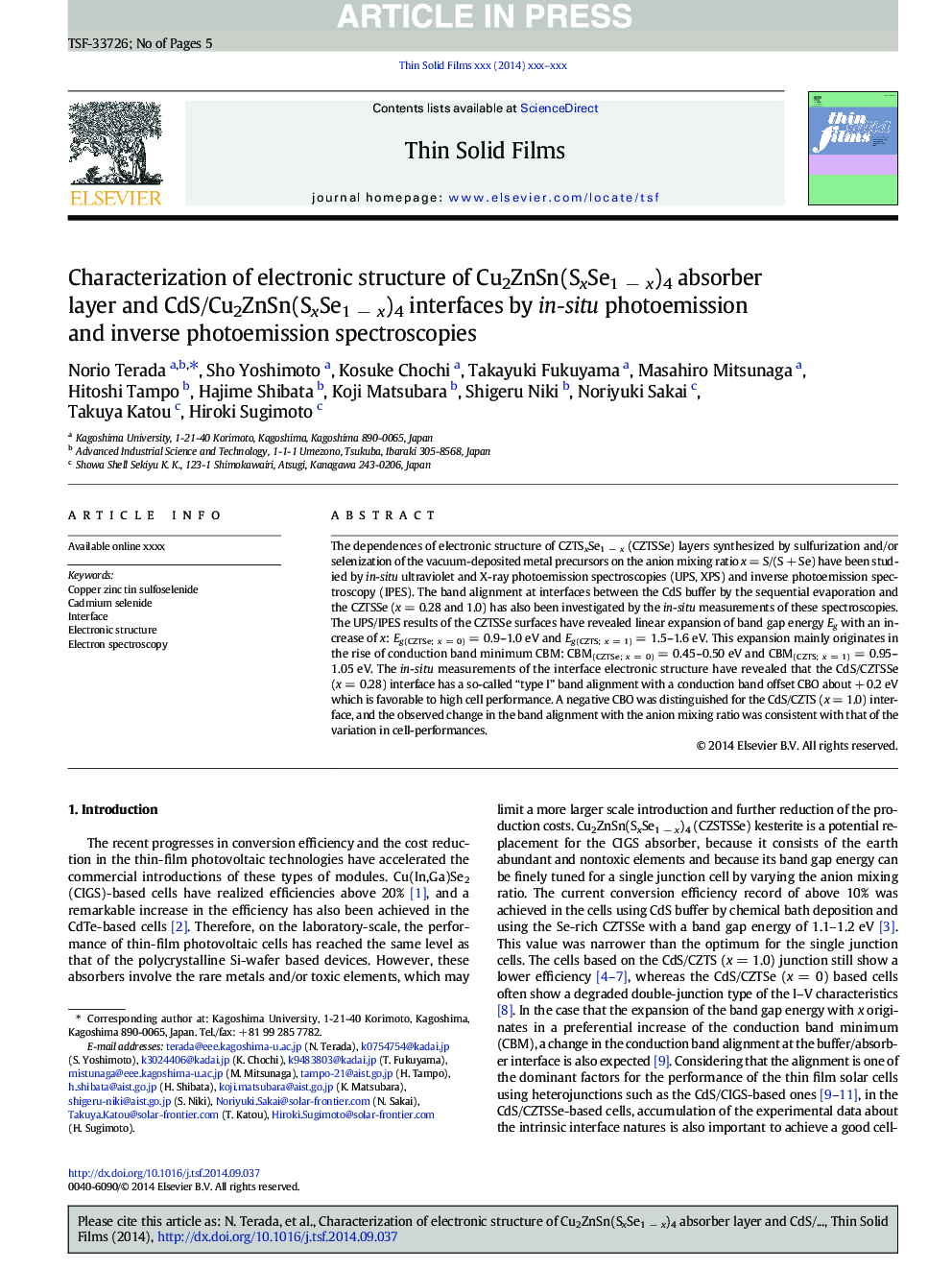| Article ID | Journal | Published Year | Pages | File Type |
|---|---|---|---|---|
| 8034328 | Thin Solid Films | 2015 | 5 Pages |
Abstract
The dependences of electronic structure of CZTSxSe1 â x (CZTSSe) layers synthesized by sulfurization and/or selenization of the vacuum-deposited metal precursors on the anion mixing ratio x = S/(S + Se) have been studied by in-situ ultraviolet and X-ray photoemission spectroscopies (UPS, XPS) and inverse photoemission spectroscopy (IPES). The band alignment at interfaces between the CdS buffer by the sequential evaporation and the CZTSSe (x = 0.28 and 1.0) has also been investigated by the in-situ measurements of these spectroscopies. The UPS/IPES results of the CZTSSe surfaces have revealed linear expansion of band gap energy Eg with an increase of x: Eg(CZTSe; x = 0) = 0.9-1.0 eV and Eg(CZTS; x = 1) = 1.5-1.6 eV. This expansion mainly originates in the rise of conduction band minimum CBM: CBM(CZTSe; x = 0) = 0.45-0.50 eV and CBM(CZTS; x = 1) = 0.95-1.05 eV. The in-situ measurements of the interface electronic structure have revealed that the CdS/CZTSSe (x = 0.28) interface has a so-called “type I” band alignment with a conduction band offset CBO about + 0.2 eV which is favorable to high cell performance. A negative CBO was distinguished for the CdS/CZTS (x = 1.0) interface, and the observed change in the band alignment with the anion mixing ratio was consistent with that of the variation in cell-performances.
Related Topics
Physical Sciences and Engineering
Materials Science
Nanotechnology
Authors
Norio Terada, Sho Yoshimoto, Kosuke Chochi, Takayuki Fukuyama, Masahiro Mitsunaga, Hitoshi Tampo, Hajime Shibata, Koji Matsubara, Shigeru Niki, Noriyuki Sakai, Takuya Katou, Hiroki Sugimoto,
